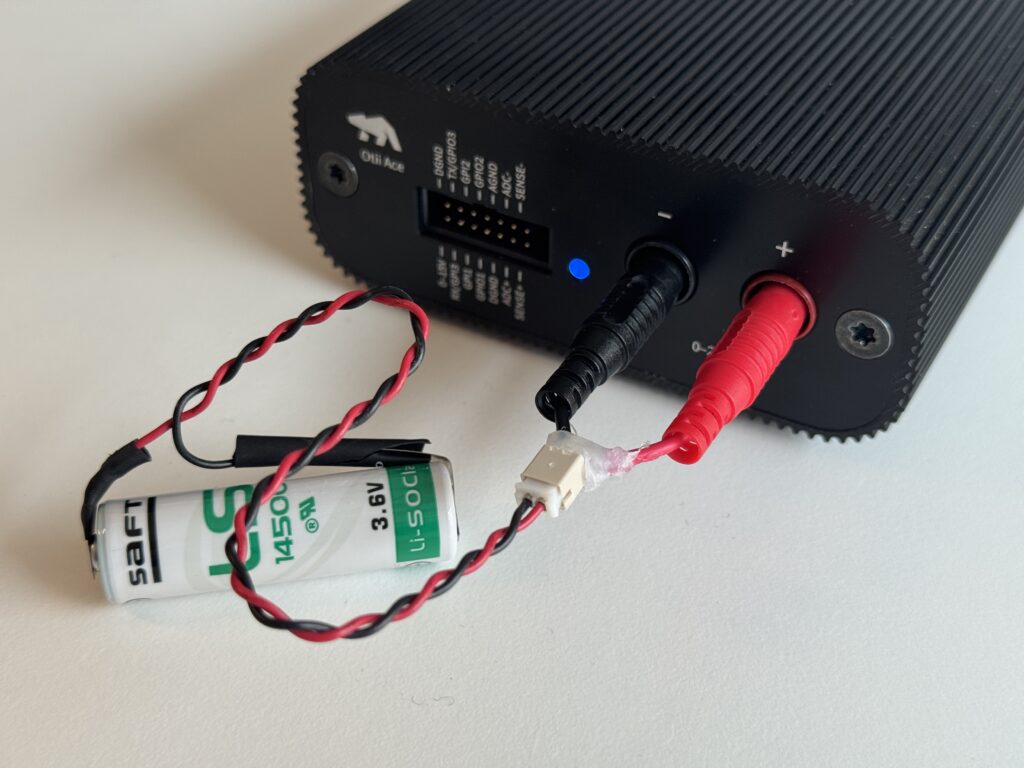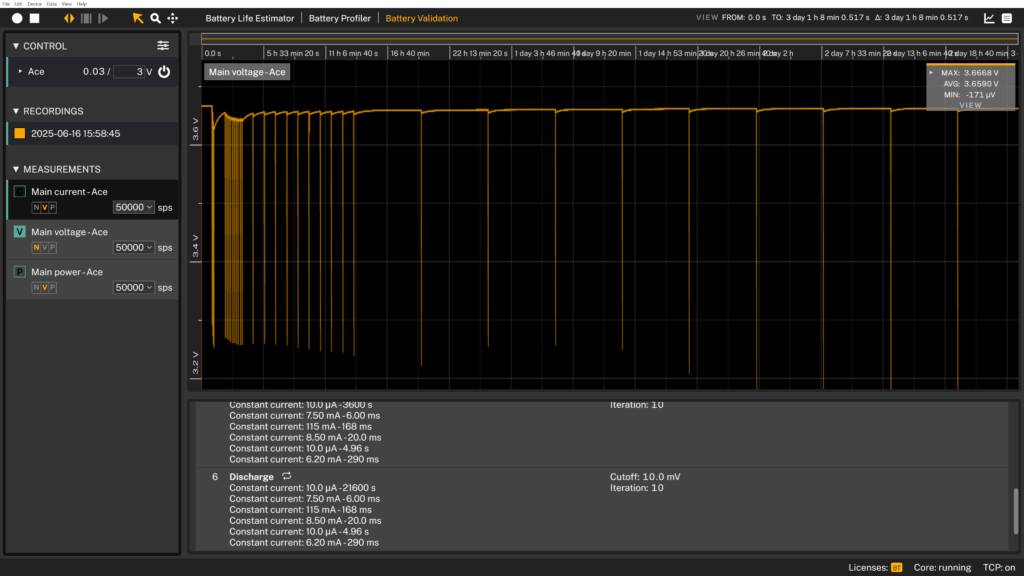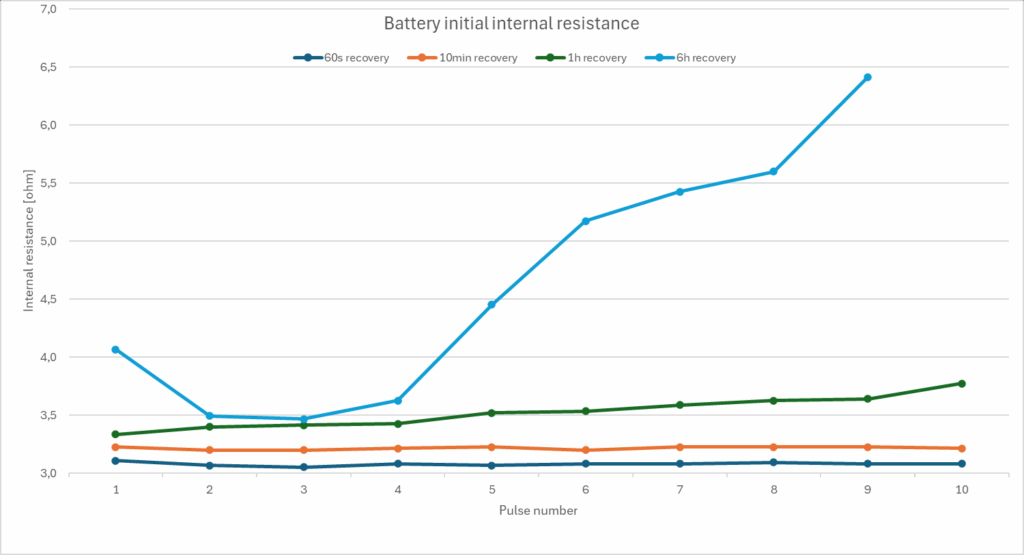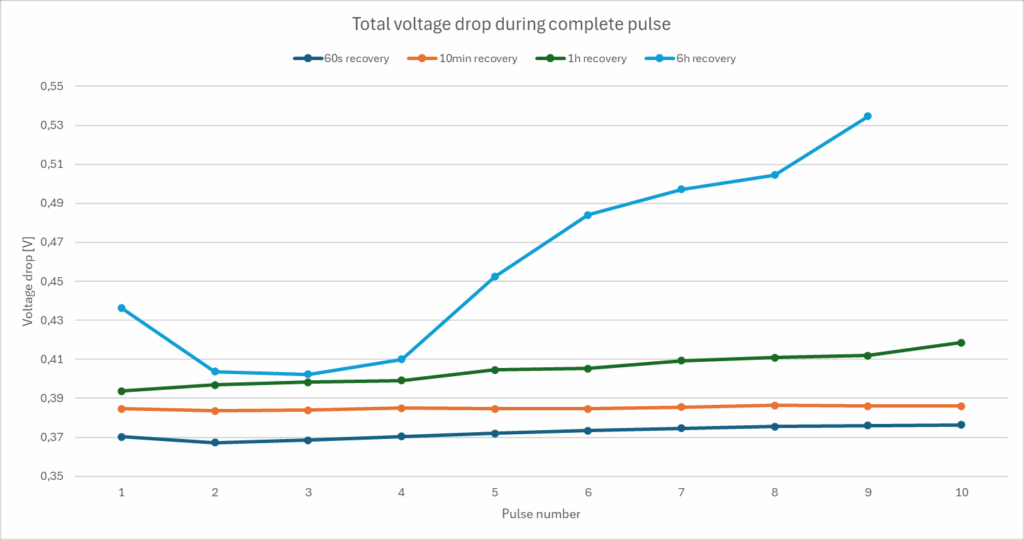Sleep time impact on lithium thionyl chloride battery performance
Sleep time impact on lithium thionyl chloride battery performance
Long-life lithium batteries, particularly those based on lithium thionyl chloride (Li-SOCl₂) chemistry, are widely used in embedded systems and IoT applications. Their appeal lies in their high energy density, minimal self-discharge, and ability to operate across extreme temperatures. These characteristics make them ideal for long-term deployments in remote locations, such as smart metering for gas, water, and electricity, where maintenance is costly or infrequent.
Despite their strengths, Li-SOCl₂ cells are prone to a phenomenon known as battery passivation. This occurs when a thin insulating layer forms on the lithium surface during storage, potentially impeding initial current flow and affecting device startup and longevity. The extent of this passivation is influenced by factors such as storage duration, ambient temperature, and battery charge state.
In this article, we focus specifically on the role of sleep time—the duration a battery remains at rest without load or activity—and how it contributes to passivation buildup. Using an unused Saft Li-SOCl₂ battery that has been in storage for 4.5 years, we analyze how recovery periods impact battery performance, startup behavior, and available capacity. This study provides practical insights for engineers and developers designing low-power systems that depend on long-shelf-life batteries.
Battery passivation measurements on lithium thionyl chloride cells with Otii Ace
The batteries
In this case study, we investigated the passivation effects of a Saft LS14500, 3.6V battery. The battery was manufactured in December 2020.
The measurement set-up
The battery is evaluated in a compact and scalable setup with Otii Ace Pro (see picture below), utilizing the Otii Battery Toolbox. The full step-by-step setup is explained and can be followed here.
The battery is tested with a battery connector connected to the banana connectors of the Otii Ace Pro.

Lithium thionyl chloride battery discharge profiles
In this study, we chose to investigate the passivation effect assuming a LoRaWAN device and a typical LoRaWAN discharge profile.
The discharge profile is selected for LoRaWAN spreading factor 9 (SF9), with a sleep current of 10uA. We started with a recovery period of 60 seconds.
The discharge profile is simplified to:
- 10uA for 60s (sleep period)
- 7.5mA for 6ms (wakeup)
- 115mA for 168ms (TX)
- 8.5mA for 20ms (post TX)
- 10uA for 4.96s (sleep, waiting for RX)
- 6.2mA for 290ms (RX)
Before this test, the battery was discharged to approximately 40% State of Charge (SoC). This was achieved by applying a low constant current load over an extended period, followed by a rest phase. Both the reduced SoC and the prolonged recovery period were intentionally selected to intensify passivation effects. This is because passivation tends to increase with longer idle times and lower SoC levels, making these conditions ideal for studying how the battery behaves under more challenging, real-world scenarios.
The test is performed at a room temperature of approximately 20°C.
The recovery period is first set to 60 seconds between each LoRa pulse. After 10 pulses, the rest time is increased to 10 minutes, then 1 hour, and lastly 6 hours (21600 seconds).
To capture detailed data for this evaluation, the Otii Ace was configured with a sampling rate of 50,000 samples per second. Combined with the fact that the test runs continuously over several days, this results in a very large project file—in this case, nearly 150 GB. Make sure your system has sufficient storage capacity before running similar tests.
While it’s possible to reduce the sample rate and still obtain valuable insights, we recommend using at least 5,000 samples per second to ensure reliable results when analyzing fast transient behaviors.

The effects of recovery periods on lithium thionyl chloride battery passivation
Since the LoRa transmission consists of multiple distinct current steps, there are several ways to approach the analysis. For this study, we focus on two key measurements:
- Initial internal resistance of the battery during the wake-up phase, represented by the 7.5 mA current step.
- Total voltage drop during the full pulse, specifically when the current peaks at 115 mA for 168 ms.
For each of the 10 pulses recorded per rest period, we take the following voltage measurements:
- V1: The initial voltage level before the pulse begins.
- V2: The voltage after the 7.5 mA step.
- V3: The minimum voltage observed during the full 115 mA pulse.
The initial internal resistance is then calculated using Ohm’s Law:
R = V / I where V = V1 – V2 and I = 7.5mA
Note: Actually I = 7.5mA – 10uA but 10uA<<7.5mA and can be neglected.
This approach allows us to track how internal resistance and voltage stability evolve with increased rest time and passivation effects.
As shown in Figures 2 and 3, the results exhibit a consistent trend. With 60 seconds and 10 minutes of recovery time, the passivation effect is minimal. However, at 1 hour, signs of passivation begin to emerge. By 6 hours, the effect becomes noticeable, indicating a significant increase in internal resistance and voltage drop due to prolonged rest.


The deviation observed in the first data point for the 6-hour recovery period may be due to environmental conditions during the test. Specifically, the air conditioning in the lab failed, causing the ambient temperature to rise to nearly 30 °C, which could have affected the battery’s behavior.
To improve the reliability and repeatability of this test, the battery should ideally be placed in a temperature-controlled chamber. This would not only ensure stable conditions but also allow for a more systematic study of how temperature influences passivation. Additionally, exploring longer rest periods could provide valuable insights, although this would require a lower sampling rate to manage file sizes effectively over extended durations.
Summary
Battery passivation in lithium thionyl chloride (Li-SOCl₂) cells is a well-known phenomenon that can compromise the performance of smart meters and IoT applications, despite the chemistry’s inherently high energy density and low self-discharge.
To better understand the risks and quantify the impact of passivation, it’s essential to measure its effects under realistic conditions. In this study, we examined a SAFT Li-SOCl₂ battery, discharging it for extended idle periods common in production or field-deployed devices. The focus was to evaluate how prolonged rest time (sleep time) contributes to passivation.
Our results show a clear and consistent pattern. For short recovery times, the passivation effect was negligible. However, at 1 hour, measurable signs of passivation began to appear. By 6 hours, the effect became pronounced, reflected in both increased internal resistance and more significant voltage drops during current draw. These findings highlight how even moderate idle periods can degrade battery responsiveness if not adequately accounted for in system design.
If you’d like to learn more about the Otii Product Suite and how it can help you evaluate battery passivation and ensure the right battery choice for your project, don’t hesitate to contact us.
Sign up for more tech insights
A monthly dose of articles, tips & tricks, and know-how – everything you need to extend battery life in IoT and embedded devices.